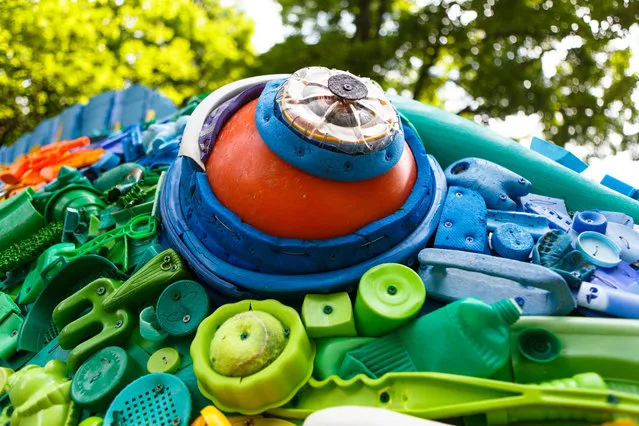
A parrotfish, made from debris from the world’s oceans, is part of a larger art project representing the some 315 billion pounds of trash currently found at sea. The fish, along with other ocean species, can be found at the National Zoo. (Photo by Keith Lane/The Washington Post)
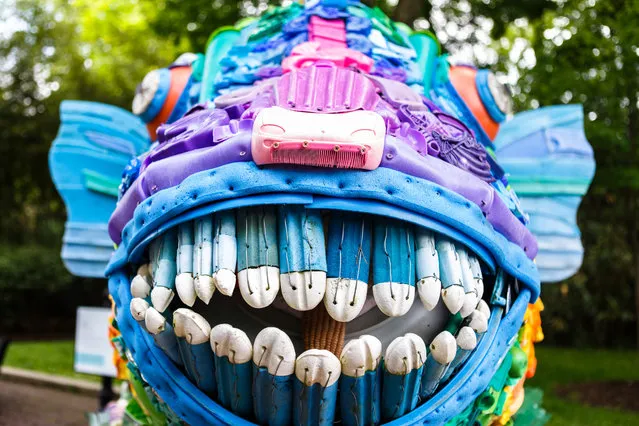
A parrotfish, made from debris from the world’s oceans, is part of a larger art project representing the some 315 billion pounds of trash currently found at sea. The fish, along with other ocean species, can be found at the National Zoo. (Photo by Keith Lane/The Washington Post)
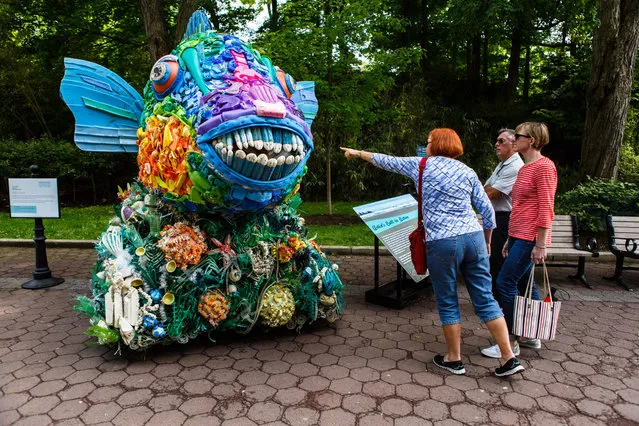
Visitors at the National Zoo check out a parrotfish made from found waste from the ocean in Washington, DC on May 23, 2016. The artwork can be seen at the National Zoo until September 5th. (Photo by Keith Lane/The Washington Post)
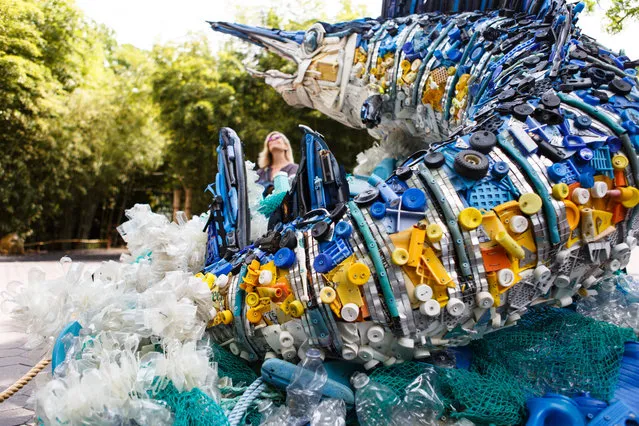
A visitor to the National Zoo checks out a marlin made from found waste from the ocean. The fish is part of a larger project entitled “Washed Ashore: Art to Save the Sea”. (Photo by Keith Lane/The Washington Post)
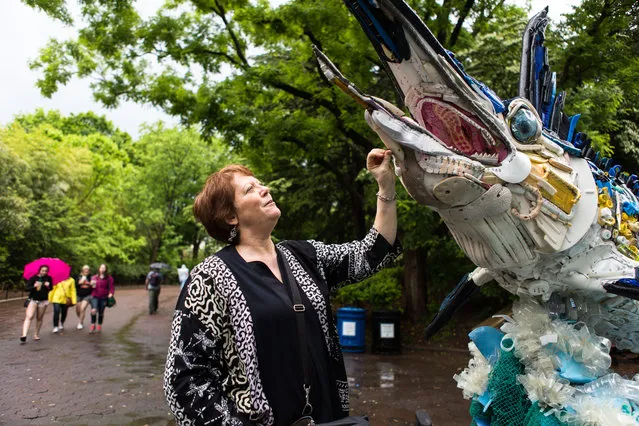
Lead artist Angela Haseltine Pozzi inspects a marlin, one of seventeen giant statues, made from waste recovered from the oceans in Washington, DC on May 23, 2016. (Photo by Keith Lane/The Washington Post)
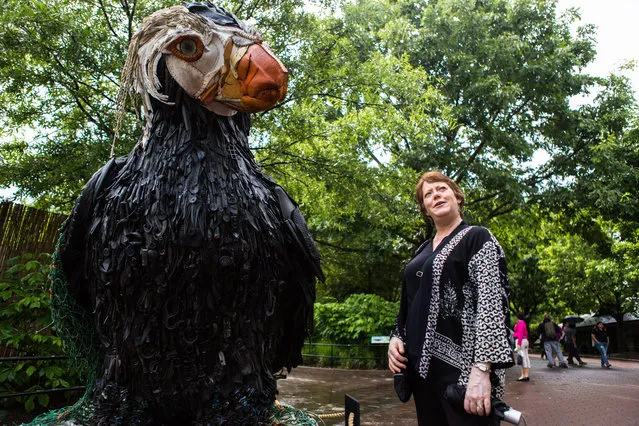
Lead artist Angela Haseltine Pozzi stands next to a puffin, one of seventeen giant statues, made from plastic waste recovered from the oceans. The exhibit is designed to educate visitors on the issue of human impact on the ocean. (Photo by Keith Lane/The Washington Post)
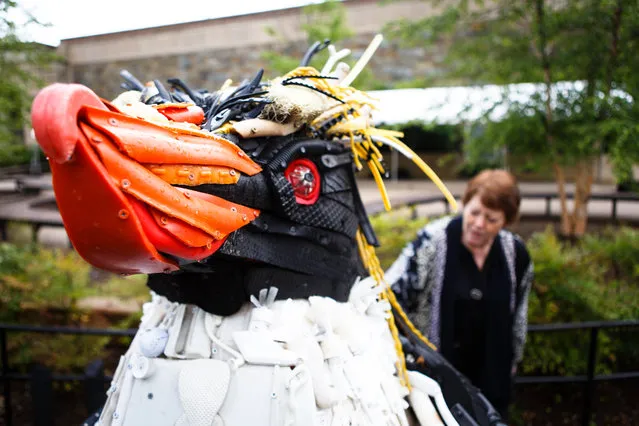
Artist Angela Haseltine Pozzi looks over Zarabelle the Rockhopper penguin outside the elephant house at the National Zoo in Washington, DC on May 23, 2016. (Photo by Keith Lane/The Washington Post)
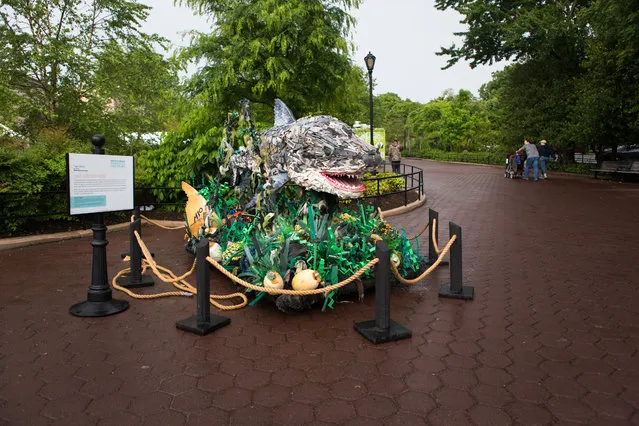
Chompers the Tiger Shark overlooks visitors to the National Zoo in Washington, DC on May 23, 2016. (Photo by Keith Lane/The Washington Post)
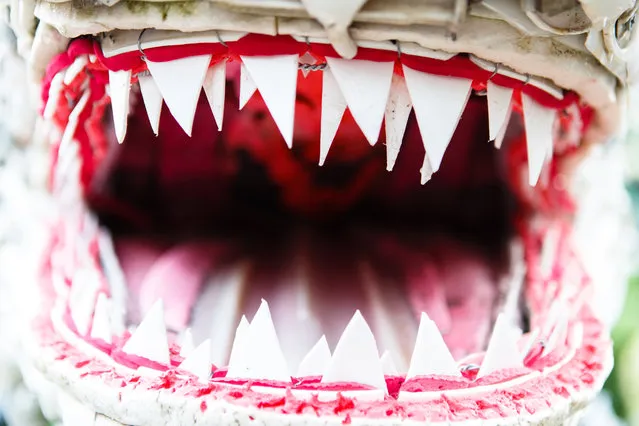
The big smile of Chompers the Tiger Shark welcomes visitors to the National Zoo in Washington, DC on May 23, 2016. (Photo by Keith Lane/The Washington Post)
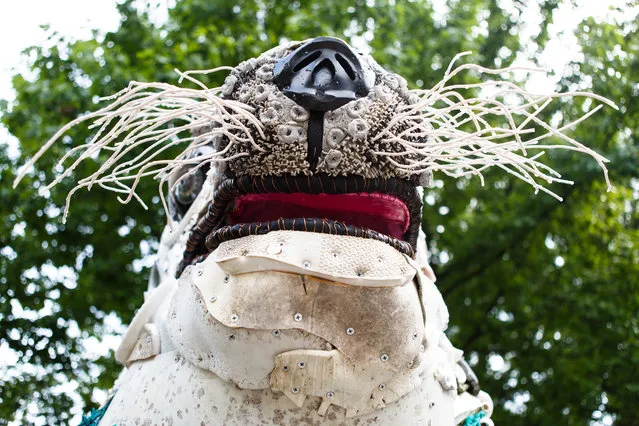
Lidia the seal is made up of trash found in the ocean. Often artist Angela Haseltine Pozzi tries to incorporate the type of waste that threatens each particular marine life into her work. (Photo by Keith Lane/The Washington Post)
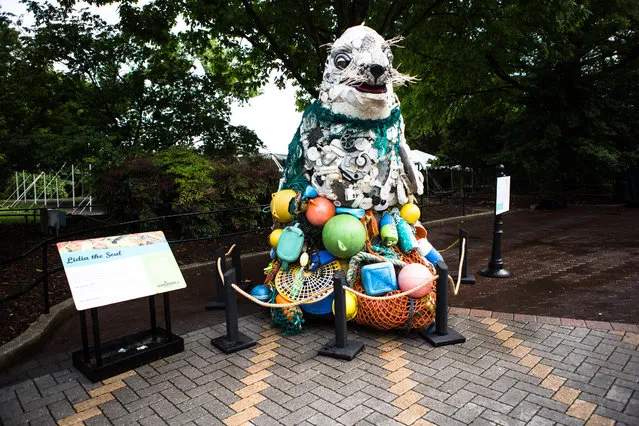
Lidia the seal is made up of trash found in the ocean. Often artist Angela Haseltine Pozzi tries to incorporate the type of waste that threatens each particular marine life into her work. (Photo by Keith Lane/The Washington Post)
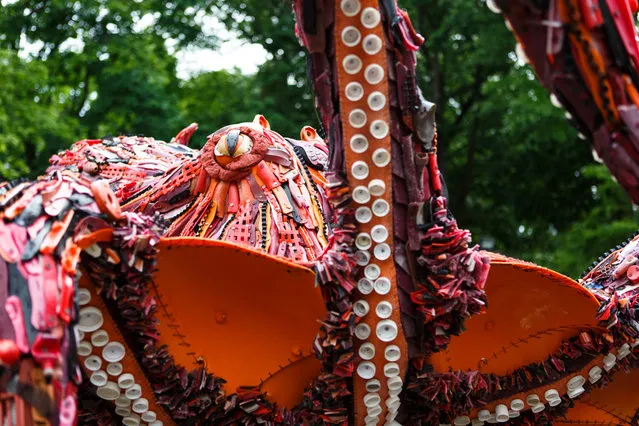
Octavia the octopus is made up of countless pieces of debris found from the world’s oceans. The sculpture was made as part of a project to highlight human beings impact on the marine life. (Photo by Keith Lane/The Washington Post)
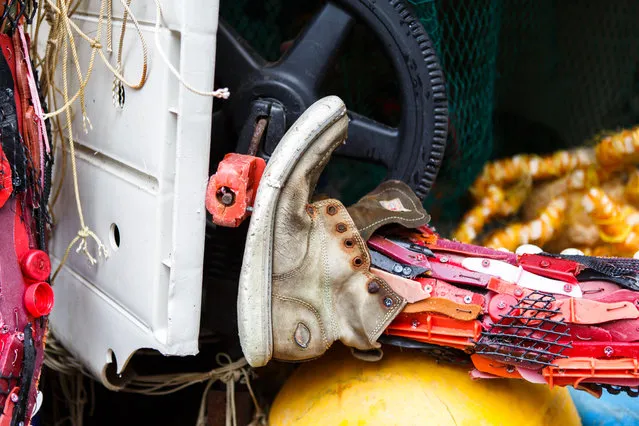
Octavia the octopus is made up of countless pieces of debris found from the world’s oceans. The sculpture was made as part of a project to highlight human beings impact on the marine life. (Photo by Keith Lane/The Washington Post)
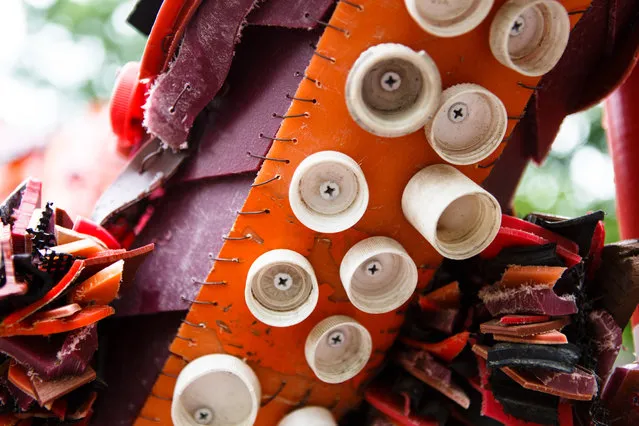
Octavia the octopus is made up of countless pieces of debris found from the world’s oceans. (Photo by Keith Lane/The Washington Post)
25 May 2016 13:11:00,
post received
0 comments
